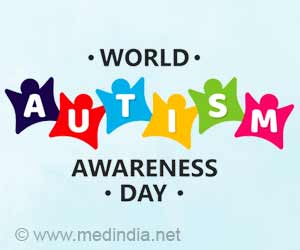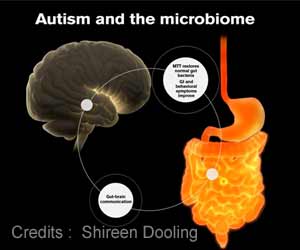
‘In the U.S., nearly 1 in 54 kids has been identified with autism spectrum disorder (ASD), with four times as many boys with ASD as girls.’
Read More..Tweet it Now
Previous studies indicated inconsistent results in terms of changes in autism severity during childhood. The general sense was that the severity of autism at diagnosis would last a lifetime.Read More..
The MIND Institute's study, published May 14 in the Journal of Autism and Developmental Disorders, evaluated changes in symptom severity in early childhood and the potential factors associated with those changes. It included 125 children (89 boys and 36 girls) with ASD from the Autism Phenome Project (APP), a longitudinal project in its 14th year at the MIND Institute. The children received substantial community-based autism intervention throughout their childhood.
The researchers used a 10-point severity measure called the ADOS Calibrated Severity Score (CSS) derived from the Autism Diagnostic Observation Schedule (ADOS), the gold standard assessment tool in autism research. They computed a severity change score for participants as the difference between their ADOS CSS scores at age six and at age 3. A change of two points or more was considered a significant change in symptom severity.
Change in severity of autism symptoms and optimal outcome
The study classified participants based on their severity change score into a Decreased Severity Group (28.8%), a Stable Severity Group (54.4%), and an Increased Severity Group (16.8%). One key finding was that children's symptom severity could change with age. In fact, children can improve and get better.
Advertisement
"It is also true that some children appear to get worse," Amaral said. "Unfortunately, it is not currently possible to predict who will do well and who will develop more severe autism symptoms and need different interventions."
Advertisement
Girls with autism and camouflaging as a coping strategy
Girls and boys might be characterized by different manifestations of autism symptoms. Girls might show better developmental results than boys in cognition, sociability, and practical communication skills. "We found that girls with autism decrease in severity more than boys and increase in severity less than boys during early childhood," said Einat Waizbard-Bartov, a graduate researcher at the MIND Institute and the first author of the paper.
One possible explanation for this difference is the girls' ability to camouflage or hide their symptoms, according to Waizbard-Bartov. Camouflaging the characteristics of autism includes masking one's symptoms in social situations. This coping strategy is a compensatory social behavior more prevalent in females diagnosed with ASD compared to males with ASD across different age ranges, including adulthood.
"The fact that more of the girls appear to have decreased in autism severity may be due to an increasing number of girls compared to boys who, with age, have learned how to mask their symptoms," Waizbard-Bartov said. "We will explore this possibility in future studies."
IQ, initial severity and change in autism severity
The study also found that IQ had a significant relationship with change in symptom severity. Children with higher IQs were more likely to show a reduction in ASD symptoms.
"IQ is considered to be the strongest predictor of symptom severity for children with autism," Waizbard-Bartov said. "As IQ scores increased from age 3 to age 6, symptom severity levels decreased."
The researchers could not identify a relationship between early severity levels and future symptom change. Surprisingly, the group of children with increased symptom severity at age 6 showed significantly lower severity levels at age 3, and their severity scores were less variable than the other groups.
The study raises several issues for further investigation, such as the relationships between IQ, initial severity level, and type and intensity of intervention received, in relation to symptom change over time.
Source-Eurekalert













